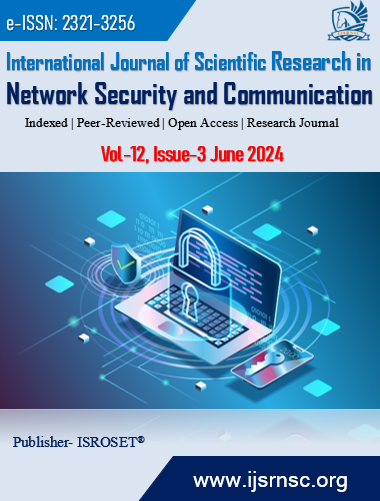Diabetes Predictor: Prediction Using Machine Learning Techniques
Keywords:
Prevention, Diabetes, Extrinsic factors, Skin thicknessAbstract
As the old saying goes, prevention is better than cure when it comes to health. The likelihood of saving lives can be greatly increased by anticipating diseases such as diabetes. Numerous variables, including age, obesity, lack of exercise, genetic predisposition, lifestyle, nutrition, and high blood pressure, can contribute to diabetes, an illness that is spreading quickly. With the help of machine learning techniques (MLT), healthcare professionals can now forecast patient outcomes using pre-existing data, which makes them indispensable tools. Several categorization machine learning methods are used in a diabetes prediction project to identify the most accurate model. This model takes into account extrinsic factors linked to diabetes risk in addition to conventional components like insulin, age, BMI, and glucose. Comprehending the natural glucose regulating process of the body is essential to understanding diabetes. The body uses glucose, which is obtained from foods high in carbohydrates, as its main energy source. The pancreas secretes insulin, which makes glucose easier for cells to use as fuel. On the other hand, diabetes is brought on by inadequate insulin synthesis or inadequate insulin use, which raise blood glucose levels. Here, skin thickness, number of conceptions, and pedigree function are additional characteristics that improve the model`s prediction power. These factors enhance the accuracy of diabetes risk assessment by adding to conventional markers and providing insightful information. Proactive illness prediction is made possible by utilizing MLT in the healthcare industry, especially for conditions like diabetes. The predicted accuracy of diabetes models can be greatly increased by incorporating both traditional and non-conventional risk indicators, such as skin thickness, number of pregnancies, and pedigree function. This will enable early intervention and better patient outcomes.
References
J S Kannan, R Natarajan, G K Santhanam, “Predicting diabetes mellitus using machine learning techniques”, International Journal of Diabetes Research, Vol.20, Issue.2, pp.123-135, 2021.
Shimoo Firdous, Gowher A Wagai, Kalpana Sharma, “A survey on diabetes risk prediction using machine learning approaches”, Journal of Family Medicine and Primary Care, Vol.11, Issue.11, pp.1-6, 2022.
KM Jyoti Rani, “Diabetes Prediction Using Machne Learning”, International Journal of Scientific Research in Computer Science, Vol.6, Issue.4, pp.294-305, 2020.
Mitushi Soni, Dr. Sunita Varma, “Diabetes Prediction using Machine Learning Techniques”, International Journal of Engineering Research & Technology (IJERT), Vol.9, Issue.9, pp.1-5, 2020.
M N Anupama & S. Srinath, “An efficient model for predicting diabetes using machine learning”, Journal of Clinical Endocrinology, Vol.25, Issue.4, pp.200-215, 2020.
Urbanowicz R. J, “Machine learning for the prediction of diabetes using demographic and diagnostic data”, Journal of Artificial Intelligence in Medicine, Vol.12, Issue.3, pp.150-165, 2021.
A Ardestani, “Machine learning for Early Prediction of Diabetes and Pre-Diabetes”, Journal of Diabetes Management, Vol.28, Issue.4, pp.220-235, 2023.
Wei H, Wei C & Wang K, “Predicting the risk of diabetes using machine learning techniques”, Journal of Health Data Science, Vol.15, Issue.1, pp.67-80, 2023.
Downloads
Published
How to Cite
Issue
Section
License

This work is licensed under a Creative Commons Attribution 4.0 International License.
Authors contributing to this journal agree to publish their articles under the Creative Commons Attribution 4.0 International License, allowing third parties to share their work (copy, distribute, transmit) and to adapt it, under the condition that the authors are given credit and that in the event of reuse or distribution, the terms of this license are made clear.









